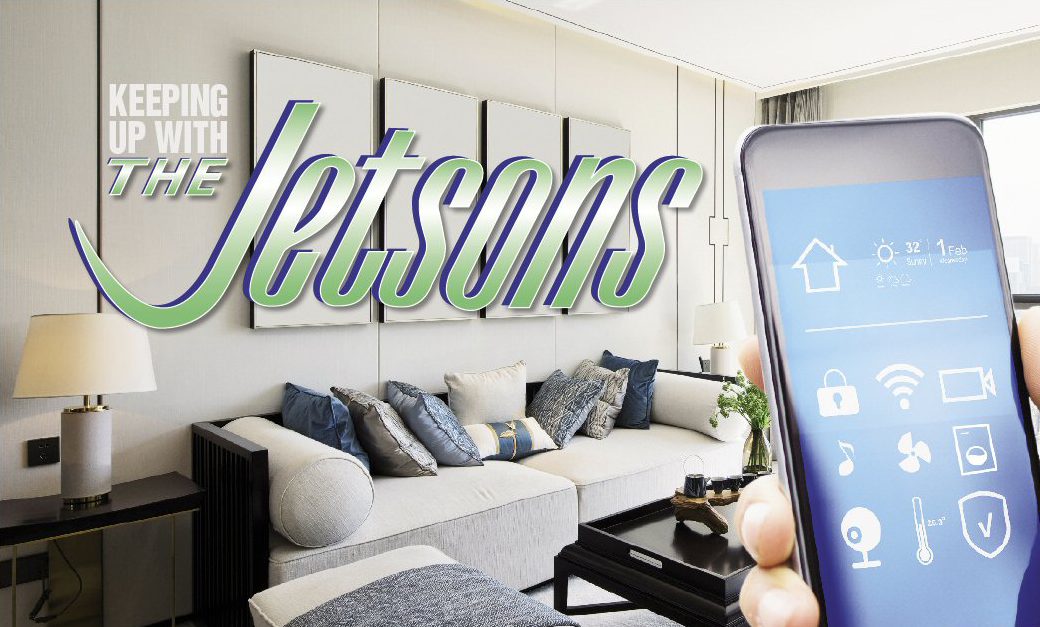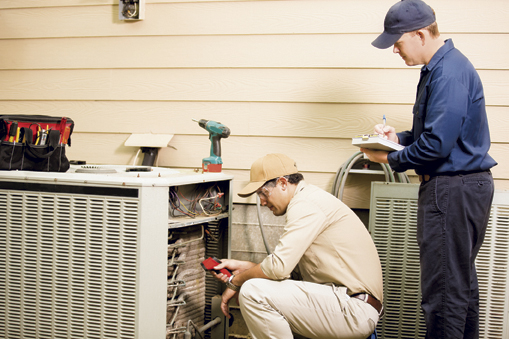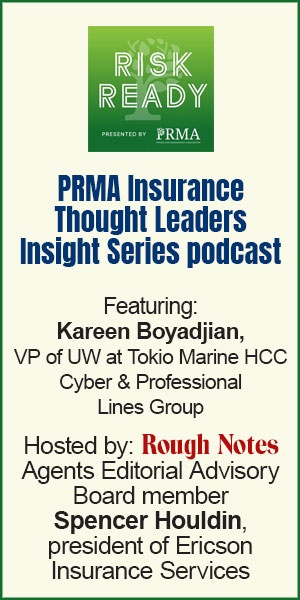Keeping up with the Jetsons
Smart home technology will pull agents into the future
By Drew Doleski
Decades ago, The Jetsons served up a whimsical take on the future. While Rosie, the Jetsons’ household robot, may not yet be a standard appliance in every U.S. residence, the notion of an automated and digitized home environment is rapidly becoming mainstream. Staggering numbers of new Internet-connected smart home products have entered the market with capabilities ranging from hazard detection to control of conveniences and voice-activated assistance. These devices represent the emerging norm.
Smart home sensors offer new opportunities to mitigate issues that may begin behind drywall or within plumbing and electrical systems.
Yet protective home technologies, such as professionally monitored alarm systems, smoke detectors, and deadbolt locks, have long been standard household features for many. The insurance industry has invested in the promise of risk mitigation through these solutions and has long rewarded consumers with premium discounts or credits. However, the emergence of broader sensing capabilities in this new generation of smart home products may cause insurers to rethink approaches and adapt to evolving consumer expectations.
The smart home of tomorrow, today
Broadly defined, smart home technology uses connectivity to allow consumers to remotely see and control many everyday objects and activities in their homes. Today this includes an array of advanced safety, home protection, and security systems to mitigate common causes of home owners’ losses. With 35% of claims caused by fire or lightning, it’s critical to have heat and smoke detection devices installed. For the 20% of claims caused by water damage and freezing, sensors can lessen the effects of events such as water leaks or burst pipes. Connected cameras can use video analytics to single out unexpected visitors, combating the 4% of claims that result from non-theft property damage and the 1% attributed to theft.
Further, smart home technology enables conveniences such as programmable lighting and temperature control, remote control of large appliances, and automation of many other common household functions.
Some of the most hazard-prone areas of a dwelling can be those that are least frequently accessed. Smart home sensors offer new opportunities to mitigate issues that may begin behind drywall or within plumbing and electrical systems. Embedded sensors can enable earlier detection of possible points of failure, and installing products such as water shutoff valves may materially reduce both the frequency and severity of many common claims through automated preemptive action.
Driven by technological advancements such as cloud computing, robust cellular communication, and cheaper hardware manufacturing practices, the cost of Internet-connected devices continues to fall. Home owners who may not have been interested in multiyear contracts with traditional home security companies are adopting self-installed and self-monitored solutions that provide safety, security, peace of mind, and convenience. Artificial intelligence and machine learning have also given rise to personal voice assistants, a driving force in the massive uptick in consumer adoption of the smart home.
Underpinning most of these solutions is the creation of data—a byproduct the insurance industry could one day use extensively to pioneer innovations in risk segmentation and mitigation, pricing, and claims handling.
Retail agencies on the front lines
The property insurance industry has a tremendous opportunity to benefit from the smart home—and retail agencies could find themselves playing a key role in realizing these benefits. To capitalize, agents and staff must become fluent in the smart home’s implications for and contributions to risk reduction.
This begins with how insurers approach discounts. The shift toward by-peril rating plans creates new opportunities for discounting. For example, installed leak detection technology could support an X% discount for the non-weather water peril. That discount could improve to X + Y% if the home owner has also installed an automated water-shutoff valve.
While this may seem like a simple scenario, retail agents must have a comprehensive understanding of carriers’ eligibility requirements for discount factors and learn to ask the right questions during underwriting to capture information proactively.
Further, retail agents can become trusted sources of information about protective technology. Clients may benefit from the addition of certain smart home devices of which they may be unaware. An opportunity to add value can drive differentiation and improve retention for the agency.
The intersection of property insurance and the smart home will continue to evolve. Just as usage-based insurance (UBI) for personal auto has capitalized on driving behavior data from vehicles, the insurance industry may one day adopt home behaviors as a new tool to refine pricing. While home telematics isn’t yet a mainstream insurance offering, it’s not hard to envision a shift toward incorporating these data signals as a new means of risk assessment. The resulting impact on retail agencies could be significant.
When George Jetson steps into your office, will you offer him the right insurance solution?
The author
Drew Doleski is an IoT/telematics senior product manager at Verisk.






